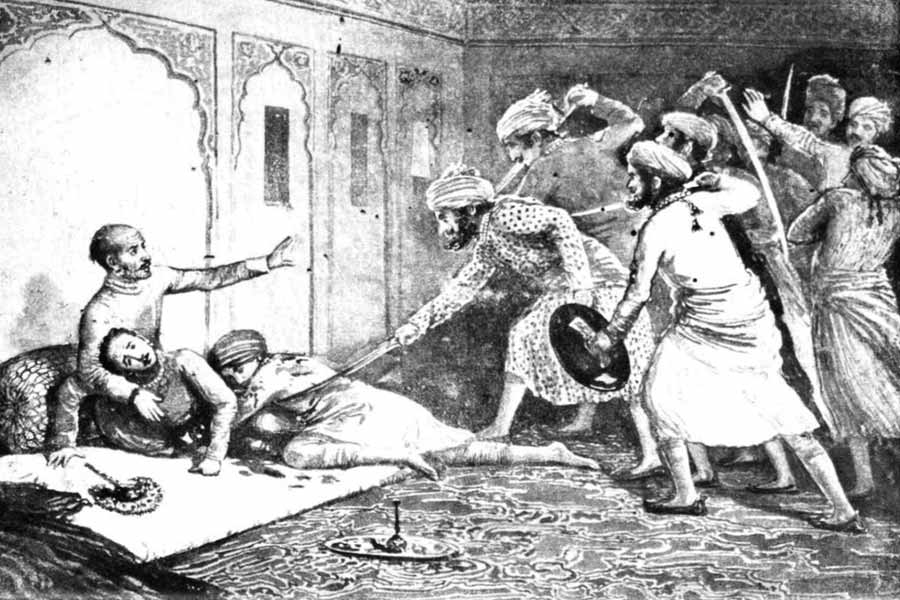Gour and Pandua are two medieval citadels in Malda district. They are best explored from Malda town. Gour houses about a dozen archaeological monuments. The southern most of these is the Kotwali Darwaza, which lies on the Indian side of India – Bangladesh border, with the border barely few meters away. Today, it serves as a BSF outpost and is literally a gateway between the two countries. But the archaeological sites of Gour don’t end with Kotwali Darwaza but continue further south into the Chapai Nawabganj district of Bangladesh.
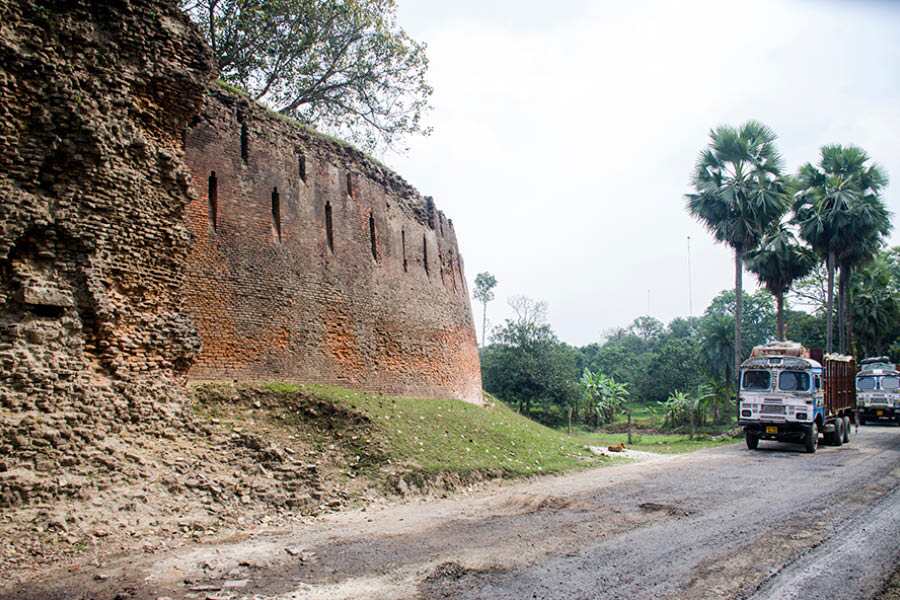
Kotwali Darwaza from the India side.
Today, the Bangladesh side houses 18 archaeological sites of Gour, which are protected under the department of archaeology of Bangladesh government. The 18 include unexcavated mounds along with minor structures like paved pathways and water channels. But about eight of these are proper structures which includes mosque, tomb, madrasa and hammam.
Choto Sona Masjid
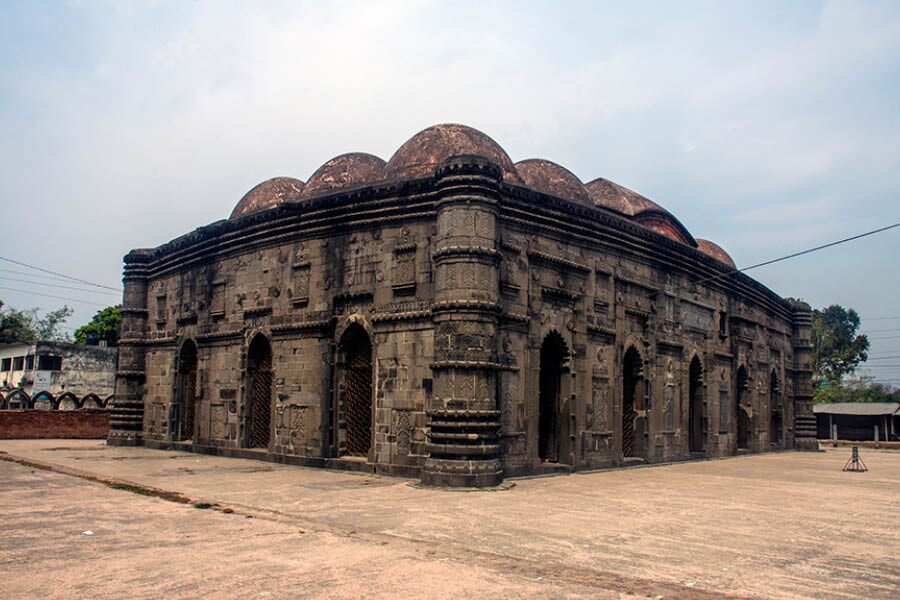
Bora Sona Masjid (Big Golden Mosque) is a prime attraction of Gour and is a must-visit for tourists from Malda. So if there is a big one, there has to be a small one too. Yes, it does exist and is just 11km south of its larger counterpart but are separated by an international border. Choto Sona Masjid is barely 2.5km south of the border. The mosque was constructed by Munsar Wali Muhammad between 1493 and 1519, which corresponds to the reign of Husain Shah. The mosque appears to be stone-built but in reality, the core structure is of bricks, which is covered with stone.
The other walls have beautiful ornamentation of shallow stone relief work. The masjid has a total of 11 arched entrances. Five of these are located on the east. Each of the north and south sides contains three gateways. The mosque has a total of 15 domes out of which the three central domes follow the traditional Bengal char chal style.
The remaining 12 are hemispherical domes. The domes were once gilded and hence, the name. The four corner of the mosque houses octagonal turrets. The interior contains five highly ornate black stone mihrabs on the western wall. The northwest corner of the mosque houses an elevated platform probably used by the royals and ladies during namaaz. The mosque has a walled courtyard on the eastern side with a stone gateway on the eastern wall leads to the mosque complex. The courtyard houses two graves of martyrs of the Bangladesh Liberation War of 1971. Outside the complex there are several graves including two large ones housed on an elevated platform. This is believed to contain the mortal remains of the mosque builder Wali Muhammad and his wife.
Tahkhana
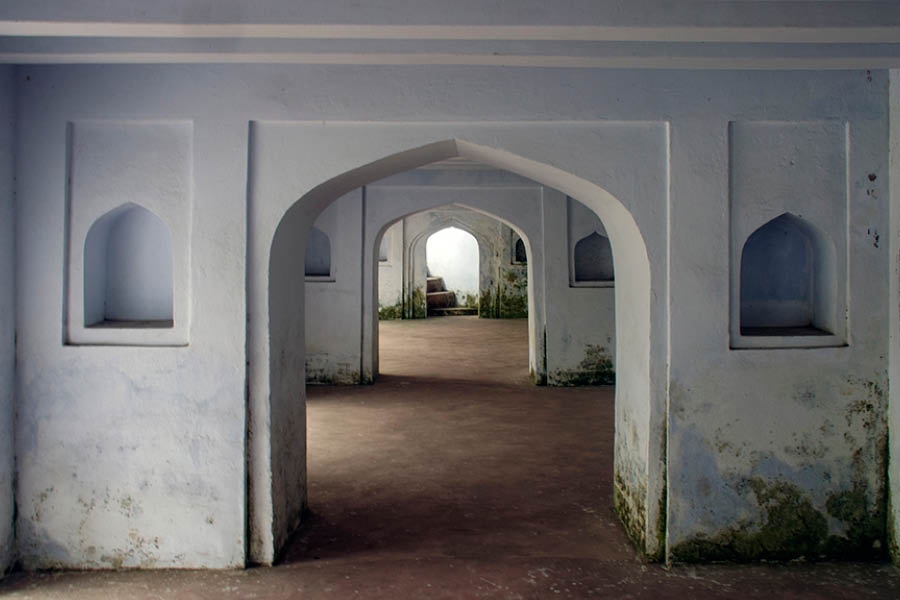
Next stop is Tahkhana, it is located about 500m northwest of Sona Masjid and next to a large pond named Zahedulbala. The two-storeyed brick-built tahkhana is a multi-purpose building which comes in with a total of 17 rooms. Two octagonal rooms on the northwest were used for namaaz. The southern section contains a hammam. The other rooms served as dinning and meeting places. Nothing much is known about the exact purpose of the building but it is widely believed that the building served as a residence of Shah Niamatullah. Niamatullah was the spiritual guru of Shah Shuja, the elder brother of Aurangzeb. He served as a subedar of Bengal and made frequent visits to his spiritual guru.
Shahi Niamatullah Masjid

This is located just north of Tahkhana and is located in the same complex known as the Tahkhana complex. The masjid is built by Shah Shuja as a tribute to his spiritual guru Niamatullah. It is a three-domed mosque and with minarets at the four corners. Like the Choto Sona Masjid, it also has a walled pavilion on the eastern side, which is complete with a gateway, corner turrets and lattice screens.
Shahi Niamatullah Mazar
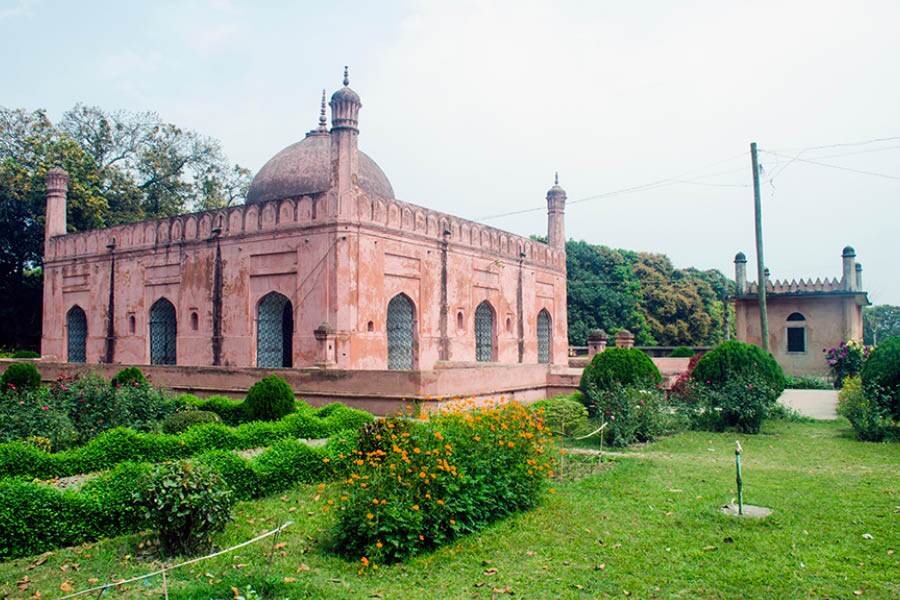
This is third structure of the complex and is located north of the mosque. It is a simple single domed structure housing the mortal remains of Niamatullah. Niamatullah died in 1664 (another source 1669) and was laid to rest in the tomb, which was previously been built by Shah Shuja. It is single domed structure with three arched entrances on all four sides and slender minarates at the four corners. Adjoining the tomb lies another tomb. The entire complex hoiuses several other graves.
Darasbari Masjid
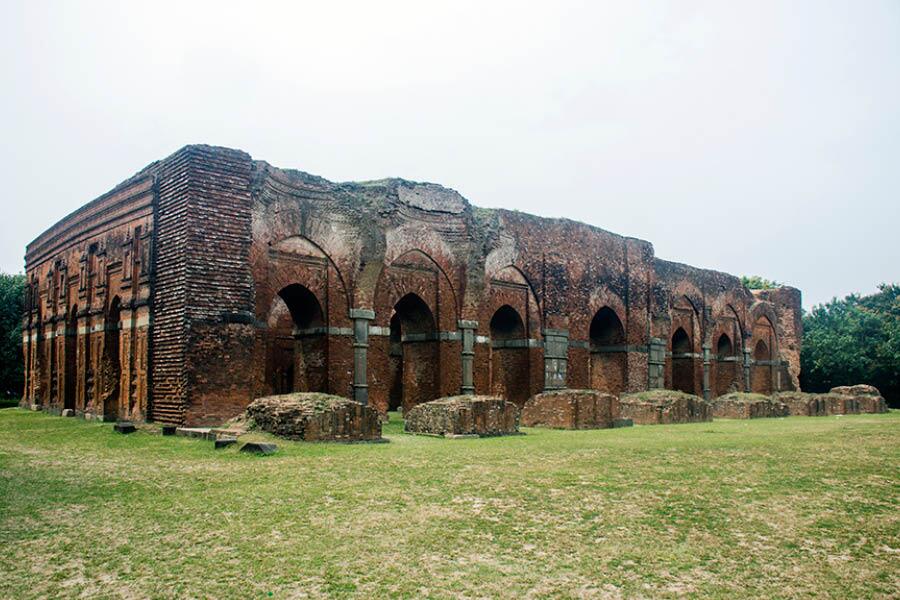
Next stop is the Darasbari Masjid located just north of the Tahkhana complex. There is no direct road. So one has to get back to the main road drive north towards the border and then take a left turn. The mosque faces east and has a total of 13 arched entrances, which include seven on the east and three each on the north and south. The eastern part once had a porch, but it has long collapse. The roof once houses a total of 21 domes which included 18 hemispherical domes and teen chala domes but none remains to this day. What makes the mosque unique is its terracotta ornamentation. Although restricted to floral and geometric designs it has executed to the minute details. Unlike the other mosque of the region, this roofless mosque is no longer in use.
Darasbari Madrasa
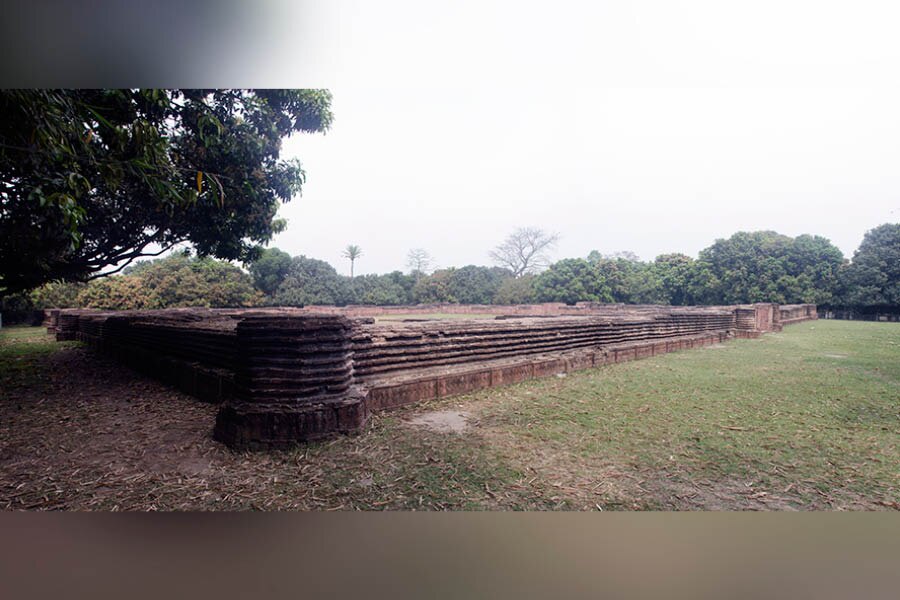
The meaning of the word ‘Darasbari’ is a place of learning and no wonder there is a madrasa (Islamic school) next to the mosque. The madrasa is approachable from the masjid through a path past a pond and meandering through a mango orchard. The madrasa came up in 1504 during the reign of Hussain Shah. The madrasah has 40 rooms surrounding an open courtyard. There are gates on three side excepting the west which houses a room with three mihrabs. The ruins of the madrasa were excavated in the 1970s and nothing much remains of it.
Dhoniachak Masjid

Wikimedia Commons
Bidding farewell to the Darasbari Masjid and madrasa, which are located only a few feet from the border, head to the main road. After a short drive towards north take a right turn towards Dhoniachak Masjid. It is a small ornate brick built masjid with six domes. There are a total of seven doors with three on the front (east) side and two each on north and south. The corners have octagonal turrets. Nothing much is known about the history of the mosque.
Khanai Dighi Masjid
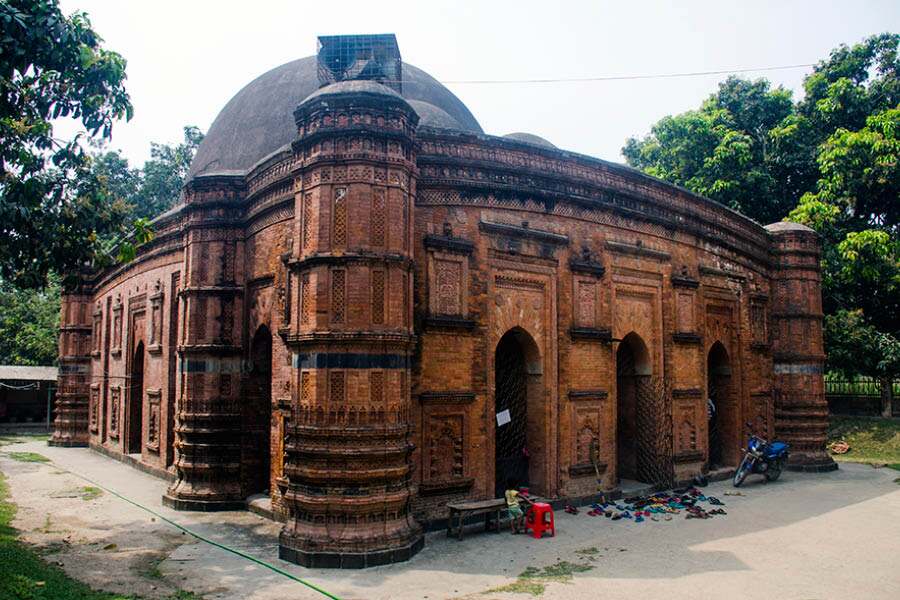
Back again on the main road and towards India. Just before the check post a right turn will lead to the Khanai Dighi Masjid. As the name suggest it is located next to a pond of the same name. Nothing much is known about the history of the mosque. The small single-dome mosque has some amazing terracotta ornamentation. The eastern part as a porch with three small domes and three arch entrance on the front (east). The main chamber and porch both houses corner turrets, thus the mosque has a total of six turrets.
Meal before border
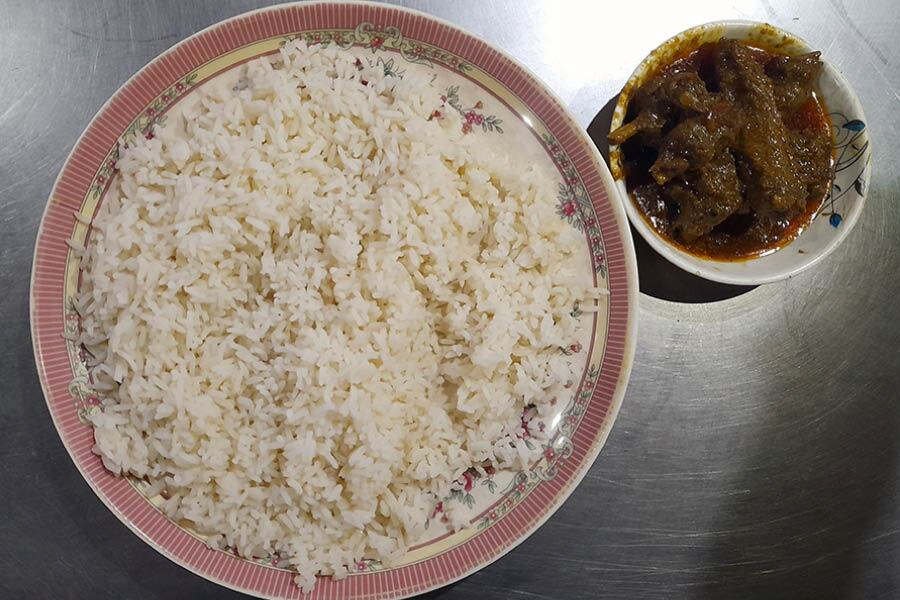
Rice and duck bhuna at Bismillah Hotel and Restaurant.
Now, it is time to head back to India and go through all the formalities. Before you head for the formalities it is best to fill your tummy and the best place to do it is Bismillah Hotel and Restaurant. It is right on the border and about 10 metres away from the Border Guard Bangladesh (BGB) post. It is a basic place to eat and caters to truck drivers carrying stone chips from India to Bangladesh. The food is simple and contains rice with fish / chicken / beef / duck meat. The duck bhuna and the rice has a unique combination.
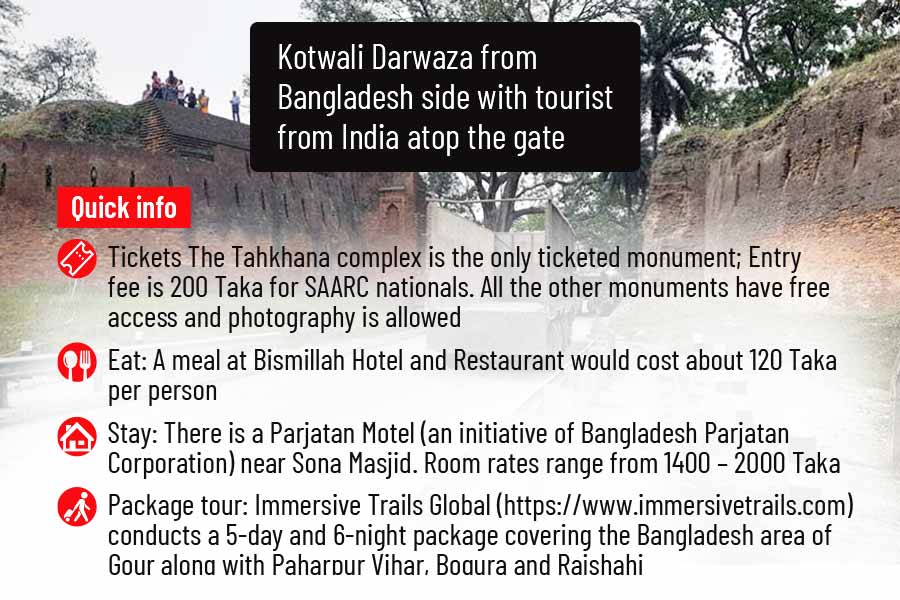
Walking across the border
The Kotwali Darwaza (in India) is visible from Bismillah Hotel and Restaurant. After completing formalities on the Bangladesh side, head towards the border (officially known as Sona Masjid – Mahadipur border) and few feet beyond it is the Kotwali Darwaza. Tourists from the Indian side can be seen atop the Kotwali Darwaza. After crossing the Kotwali Darwaza, it is time formalities on the India side. Once that is done, climb up atop the Kotwali Darwaza for a bird’s-eye view of Bangladesh.

